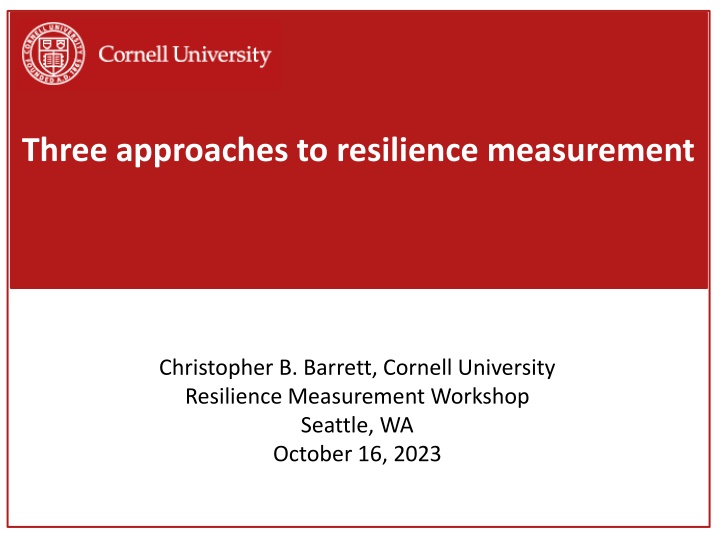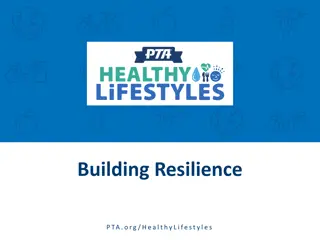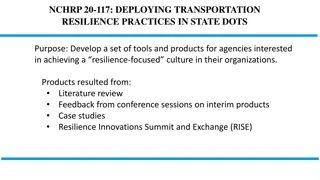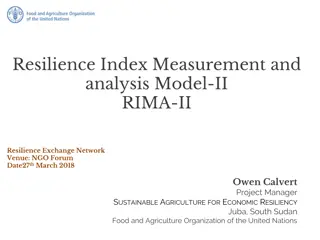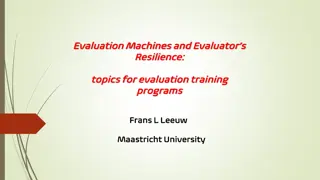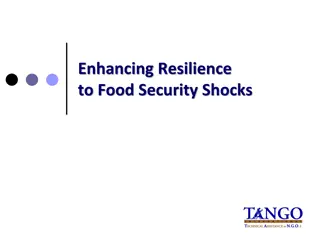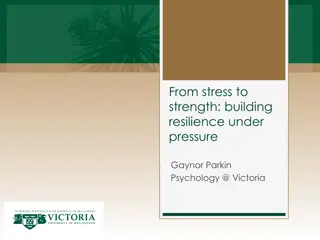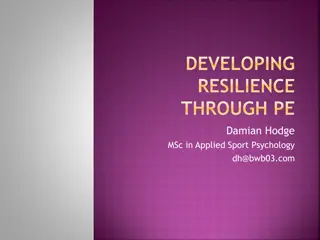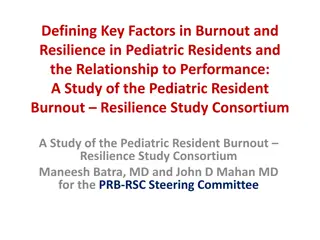Three approaches to resilience measurement
Christopher B. Barrett from Cornell University presents three approaches to measuring resilience at the Resilience Measurement Workshop in Seattle, WA on October 16, 2023. Explore key insights and methodologies discussed during the workshop for enhancing resilience assessment practices.
Download Presentation

Please find below an Image/Link to download the presentation.
The content on the website is provided AS IS for your information and personal use only. It may not be sold, licensed, or shared on other websites without obtaining consent from the author.If you encounter any issues during the download, it is possible that the publisher has removed the file from their server.
You are allowed to download the files provided on this website for personal or commercial use, subject to the condition that they are used lawfully. All files are the property of their respective owners.
The content on the website is provided AS IS for your information and personal use only. It may not be sold, licensed, or shared on other websites without obtaining consent from the author.
E N D
Presentation Transcript
Three approaches to resilience measurement Christopher B. Barrett, Cornell University Resilience Measurement Workshop Seattle, WA October 16, 2023
Motivation Why have the development and humanitarian communities become so keen on resilience ? 1) Risks perceived increasing in both frequency and intensity 2) Recovery from disasters is hard: Syria, Sri Lanka, Haiti 3) Recurring crises lay bare the longstanding difficulty of reconciling humanitarian response to disasters with longer- term development efforts. But the concept remains unclear, so hard to measure, as with most latent variables.
Why build resilience? Accelerate recovery/devt If income growth (or other measures of well-being) follows standard economic model, then uninsured risk exposure and shocks cause slower growth and recovery. Growth w/credit/finance Growth w/o credit/finance Reducing risk exposure can pay handsome returns.
Crucial w/poverty traps & catastrophic risk Poverty traps increasingly understood as arising due to catastrophic risk exposure and/or the experience of catastrophic shocks. poverty line Resilience exists when people can absorb or quickly recover from potentially catastrophic shocks and stressors. Sound theory exists.
Three different broad conceptualizations exist Measurement challenges start from contested conceptualization of resilience. The literature to date exhibits at least three distinct framings of resilience.
Three different broad conceptualizations exist 1. Resilience as capacity Define a multidimensional set of indicators commonly framed as various capitals (financial, human, natural, physical, social) assumed to enable people communities to avoid/bounce back quickly from shocks: some combination of absorptive, adaptive, transformative capacities. Two main methods in use: FAO s RIMA and TANGO approaches. Use factor analysis to reduce a vector of prospective explanatory variables to an index to try to explain variation in well-being outcome. Advantages: rich conceptualization, well-established methods Disadvantages: RCI not a dependent variable amenable to impact eval; assumes we know what creates resilience capacities
Three different broad conceptualizations exist 2. Resilience as a normative condition Anchors resilience to normative well-being standards so as to ensure advancing resilience also advances dev t objectives. Ciss & Barrett (2018 JDE) develop econometric approach. Generalized to incorporate spatial effects (Scognamillo et al. 2023 WD) Advantages: encompasses stressors and shocks; works as a dep. var. for IE Disadvantages: What is suitable normative threshold? Does it conflate distinct objectives?
Three different broad conceptualizations exist 3. Resilience as return to equilibrium Estimate the time path to recovery of well-being after a shock or shock persistence (Knippenberg et al. WD 2019; Alloush and Carter 2023) Sticks closest to ecology/engineering/etymology origins. Like resilience as a normative condition , focus on well-being not capacities. Advantages: Works as a dep. var. for IE; explicitly captures dynamics. Disadvantages: Purely about shocks, not stressors (ex ante risk exposure); higher (lower) resilience consistent w/lower (higher) well-being thus violates focus and monotonicity axioms of well-being measurement.
The struggle to learn empirically about resilience Resilience measurement remains unsettled w/multiple issues: 1. Latent variables are hard, thus contested (e.g., poverty, food security). 2. Requires high frequency, ongoing M&E w/causal identification strategy based on credible counterfactual. Few such data sets exist. 3. Must encompass the multiple perils vulnerable people face. 4. Must be decomposable to diverse subpopulations.
The struggle to learn empirically about resilience Resilience measurement remains unsettled w/multiple issues: 5. Predictive skill of existing methods is weak, raising questions about resilience s usefulness for early warning or targeting. 6. Measures appear highly sensitive to well-being indicator or shock studied (Lee, Abay and Barrett 2023 on multidimensional resilience) and to the method one uses (Upton et al. JDE 2022). 7. Quant. studies remain few, w/narrow applications in terms of countries and shocks. Is there any generalizable empirical knowledge yet?
The concept of resilience adds value, to both scholarship and policymaking. We have solid theory. But it s a road only partly travelled. We need high quality, ideally high frequency, panel data. Working out reliable resilience measurement and generalizable empirical findings will take time. Thank you for your time, interest and comments!
